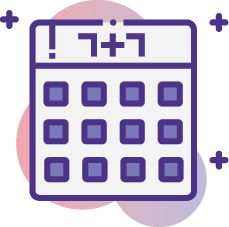 Organizations are getting ready to reopen their workplaces.
Organizations are getting ready to reopen their workplaces.
Companies across North America and around the world are assembling task forces whose job it is to manage the massive undertaking of reopening. Administrative professionals are uniquely positioned to be ideal members of such task forces, since they have all of the skills to be extraordinary project managers. At a fundamental level, a reopening is essentially a major project.
It’s a good idea to volunteer for your company’s reopening task force. It will not only help your organization, but it will broaden your own professional experience, making you more promotable or hireable and, during these uncertain times, improving your sustainability at your existing job.
It is unrealistic to think that organizations can create a “perfect plan” right off the bat. There are many moving parts—as new COVID-19 cases arise, governments at all levels are adjusting their requirements for reopening and their guidelines in terms of employee safety. However, task forces can begin to examine what can and cannot be done and begin to make a plan.
[ctt template=”3″ link=”ZtG7k” via=”yes” ]It is unrealistic to think that organizations create a “perfect plan” right off the bat. Check out this article to get started and create a great plan right off the bat![/ctt]
Let’s assume you have joined your company’s reopening task force as its leader. What are the various elements of the plan that will eventually allow the organization to reopen, and what are the questions you’ll have to ask yourself?
Survey. Before you begin to plan the reopening, you will need to survey your employees to find out their concerns. What are they hoping the plan will include? Do they have any recommendations that may be useful? If you implement a return–to–work plan without input from your employees, they may feel that you aren’t taking their fears, needs, and hopes into consideration. Ask them what they are worried about, so your plan can address as many of their concerns as possible.
Legal. It is strongly advised that organizations contact a lawyer to determine the company’s legal obligations. How will you deal with employees who have COVID-19 symptoms? How will you deal with employees who are unwilling to return to the workplace until we have a vaccine? What human rights must be considered? If your workplace has unionized employees, there will be another set of considerations you’ll need to address.
Physical safety. The guidelines for social distancing that are put in place by your government will have to be accommodated. If you have to have work stations six feet apart, where you put all of the workers? Will you have a staggered or rotating return to the workplace? Will you restrict the number of customers, vendors and other third parties entering and exiting the workplace? What will be required for cleaning the workspaces between groups? You need to consider all touchpoints: doors, washrooms, kitchen facilities, photocopiers, mailboxes, workstations, elevators, communal office supply areas and more. Are you going to put tape on the floor, provide plexiglass at workstations, ask that all doors remain closed at all times? What are the guidelines regarding sanitizing? Will you have hand sanitizer stations available in high traffic areas? What about emergency evacuation plans? What about your company’s open-air areas such as parking lots and green spaces?
Culture and values. Is having some or all of your team continue to work remotely a good thing for your culture or will it make employees feel cut off from the “mother ship”? If you have a certain percentage of your workforce working in the office while others work from home, how will it impact the culture and values of your organization—will there be resentment by one group or another? Do you plan to eventually bring everyone back to the office, or will you consider remote working a permanent option for some employees?
You can maintain a collaborative, team environment when everyone is not in the same space, but it will take planning and consideration. Those not working in the office may feel abandoned and forgotten. How will you decide who returns to the workplace and who doesn’t?
Take time to ensure you are developing and enhancing your organization’s culture as you start to bring employees back to the workplace. Don’t forget your remote employees. Those working from home will likely feel abandoned. Those returning to work may feel that you don’t value their health. Communicate, educate, and plan for the wellbeing of your employees and the maintenance of your corporate culture and values.
Identify key players. Do you have someone responsible for the physical office safety procedures and policies, sanitizing the office space and procuring PPE (personal protective equipment) if required?
Have you considered the mental health implications reopening could cause some of your employees? Are you supplying any resources or training? Are you encouraging mental health breaks? Are you communicating with employees about how you are addressing individual anxieties that people have and who they can talk to about it? Will you offer remote classes like yoga or meditation, to help employees stay mentally fit?
Do you have a watchdog set up? What if someone doesn’t follow the guidelines you’ve established? Will you implement a whistleblower policy? What happens if someone starts to show symptoms, or repeatedly calls in sick? Will you require a doctor’s note? Who is going to be responsible for the oversight of all these issues?
Who is in charge of communication both before your employees return to work and while they are returning to work? How do you plan to communicate with your employees? Are you planning on a series of emails, creating a playbook, or conducting a virtual town hall? What about those who can’t attend a virtual meeting? How will they find out what the company’s plans are?
Depending on the size of your organization, you will likely need a team of at least three key players to ensure someone is responsible for all of these items. One should be a senior manager, one needs to be someone who will monitor and prepare the returning workforce, and one (possibly from HR) will be responsible for compliance with government regulations, union agreements and legal requirements.
[ctt template=”3″ link=”qfd0m” via=”yes” ] We need to prepare the workforce for return to the workplace. Here is what you need to do and think about. [/ctt]
Preparing the workforce. In addition to internal communication, training will be needed for onsite orientation. Everyone needs to be prepared for what to expect when they return to work. Are you planning a phased approach to return to the workplace starting with, say, 25% of the workforce? When will you increase that? What will your rollout process be?
How will the office look? What PPE or physical distancing is required? How are you going to adapt your business environment? Will employees be meeting with clients in person, will travel be banned, will conference rooms be limited to a small number of people? Are you asking for temperature checks each day from employees and a medical questionnaire weekly? Will you consider employees with a pre-existing condition as vulnerable and exempt from returning to work? Is age a consideration as you ask people to return to work? Are you going to stagger starting times, breaks, and eating times? What are the rules about using the elevators, lunch rooms, meeting rooms, common areas, washrooms, parking lots, and outdoor areas?
Employees’ responsibilities. Will you have rules about what you are expecting from your employees? Have you looked at how your employees will get to work and the possible health risks associated with that? Are you bringing back employees who require public transit to get to work, and will you offer alternate arrangements for them? What about the health of those in each household? Will that impact what you are asking your employees to do? Are you asking each employee to sanitize their workspace daily, hourly, weekly?
Creating a playbook for reopening your workplace won’t be quick or easy. But it does need to be done. Join your company’s task force and create the best plan possible—and you’ll pick up some professional skills and unique experience in the bargain.









